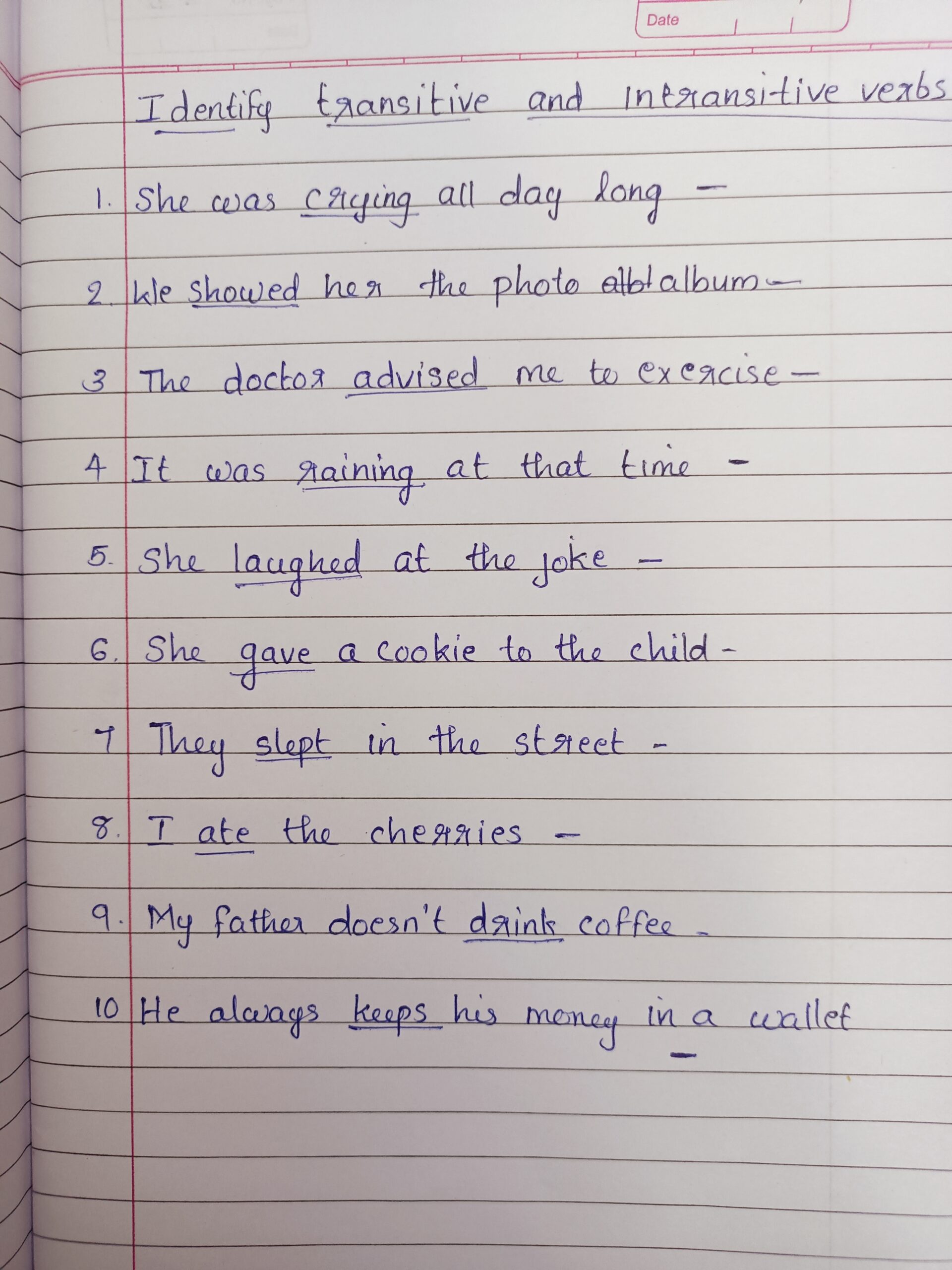Verbs are an essential part of the English language, as they help convey actions and states of being in a sentence. In Grade 5, students are introduced to the concept of transitive and intransitive verbs, which play a crucial role in sentence structure and meaning.
Understanding the difference between transitive and intransitive verbs can help students improve their writing and communication skills. Let’s delve deeper into this grammatical concept and explore examples to enhance your knowledge.
Transitive and Intransitive Verbs Grade 5
Transitive verbs are action verbs that require a direct object to complete their meaning. In other words, these verbs transfer the action from the subject to the object. For example, in the sentence “She ate an apple,” the verb “ate” is transitive because it requires an object (apple) to make sense.
On the other hand, intransitive verbs do not require a direct object to complete their meaning. These verbs express an action that does not pass on to an object. For instance, in the sentence “He sleeps peacefully,” the verb “sleeps” is intransitive as it does not require an object to convey the action.
It is important for Grade 5 students to identify transitive and intransitive verbs in sentences to understand their role in sentence construction. By recognizing these verbs, students can enhance their writing skills and create more impactful and meaningful sentences.
One way to distinguish between transitive and intransitive verbs is to ask the question “What or whom?” after the verb. If the verb can be followed by an answer to this question, it is likely a transitive verb. For example, in the sentence “She read a book,” you can ask “She read what?” – in this case, a book is the object of the transitive verb “read.”
However, in sentences with intransitive verbs, asking “What or whom?” after the verb may not yield a clear answer. For instance, in the sentence “The bird flew high,” asking “The bird flew what?” does not make sense, indicating that “flew” is an intransitive verb.
In conclusion, understanding transitive and intransitive verbs is essential for Grade 5 students to grasp the nuances of sentence structure and meaning. By practicing identifying these verbs in sentences and using them correctly in their writing, students can enhance their language skills and communicate effectively. So, keep exploring the world of verbs and watch your writing soar to new heights!
